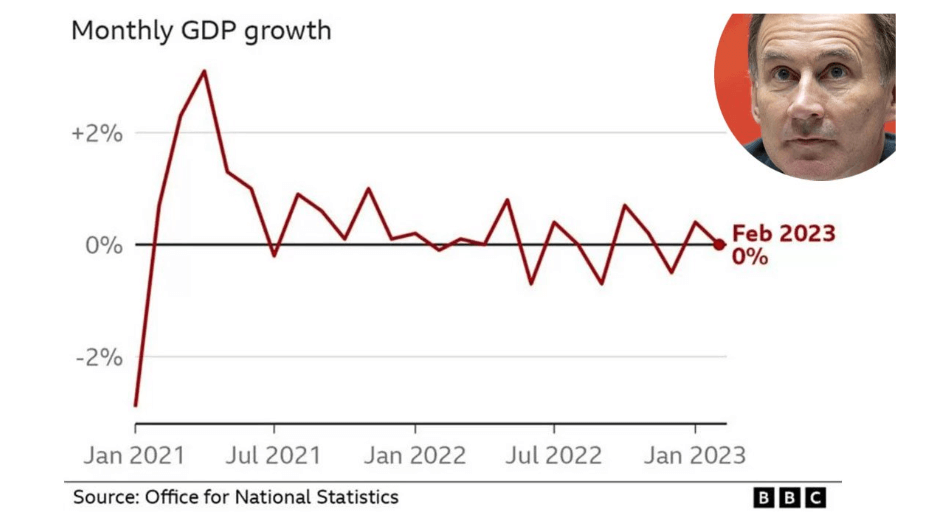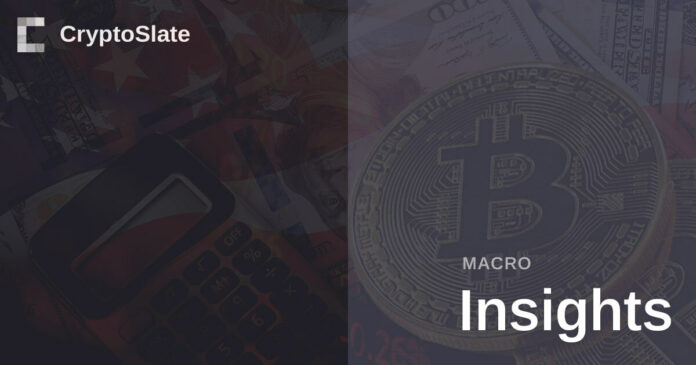Quick Take
- Due to the economy being built on credit, both growth, and expansion are necessities. As such, central banks’ biggest fear is deflation and stagflation. Take the U.K. as an example — though this can be attributed to many Western countries.
Three metrics that contribute to stagflation;
- Persistent high inflation: Inflation has been higher than the CPI goal of 2% for over a year now, and the biggest worry for central banks is entrenched inflation. For example, in the U.K., CPI Inflation has been double digits for almost a year — while core inflation has been as high as 6% for over a year.
- Stagnant demand in a country’s economy: U.K. real GDP is still below Q4 2019.
- High unemployment: We aren’t here yet, but the U.K. unemployment rate did spike from 3.7% to 3.8%. As interest rates continue to rise and stay elevated, this will further pressure the labor market.
Stagflation was last seen in the 1970s, and consumer good prices tend to rise — while asset prices tend to deflate. Central banks are getting caught between a rock and a hard place.
CryptoSlate previously covered an insight into asset prices between the 1970s and the 2020s.


The post The central banks’ dilemma: inflation, stagflation, and the cryptocurrency response in today’s economy appeared first on CryptoSlate.
Credit: Source link






















 Bitcoin
Bitcoin  Ethereum
Ethereum  Tether
Tether  Solana
Solana  USDC
USDC  XRP
XRP  Lido Staked Ether
Lido Staked Ether  Dogecoin
Dogecoin  Toncoin
Toncoin  Cardano
Cardano  Shiba Inu
Shiba Inu  Avalanche
Avalanche  TRON
TRON  Wrapped Bitcoin
Wrapped Bitcoin  Polkadot
Polkadot  Bitcoin Cash
Bitcoin Cash  Chainlink
Chainlink  NEAR Protocol
NEAR Protocol  Polygon
Polygon  Internet Computer
Internet Computer  Litecoin
Litecoin  Uniswap
Uniswap  Fetch.ai
Fetch.ai  LEO Token
LEO Token  Dai
Dai  Ethereum Classic
Ethereum Classic  Aptos
Aptos  Hedera
Hedera  First Digital USD
First Digital USD  Pepe
Pepe  Cronos
Cronos  Stacks
Stacks  Mantle
Mantle  Cosmos Hub
Cosmos Hub  dogwifhat
dogwifhat  Filecoin
Filecoin  Render
Render  Immutable
Immutable  Stellar
Stellar  XT.com
XT.com  Optimism
Optimism  Renzo Restaked ETH
Renzo Restaked ETH  OKB
OKB  Bittensor
Bittensor  Arbitrum
Arbitrum  Wrapped eETH
Wrapped eETH  Maker
Maker  The Graph
The Graph 
